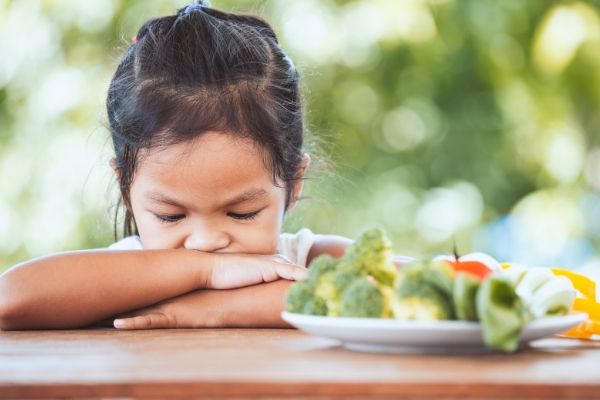Is transitioning to a plant-based diet causing power struggles with your children? Have you faced backlash from your little ones when trying to feed them more vegan food? I hear you! Even without the added challenge of swapping dairy for lentils and chicken for tofu, feeding a child can be difficult. So-called “picky eaters” have been the subject of many nutrition research studies. I invited Joanna Olson, who blogs over at Raised on Veggies and holds a Master’s degree in Nutritional Science, to share her 10 best research-backed tactics to help you get your child to eat more vegan food. It doesn’t have to be a battle!
Got picky eaters?
Consider signing up for
Brigitte’s Feed picky eaters with love workshop.
But first: why even bother?
Kids can learn to like new foods, whether they are just starting out with solids or already into the teenage years. But many of them are naturally weary of novelty on their plate. (Adults aren’t that much different!) Yet, to me, it’s worth the effort, especially because children tend to carry their eating habits into adulthood.
I have a 3-year-old daughter and I choose to feed her a plant-based diet. I want to raise her to be a caring, compassionate individual who is kind to others, including animals, and treats our earth with respect. Just as importantly, I want to do my part to nourish her with the foods that will help her grow and thrive. Diets centered around fruits, vegetables, whole grains, legumes, nuts, and seeds reduce the risk of heart disease, diabetes, cancer, and obesity. Teaching her to eat well today will set her up for a lifetime of health benefits!
If you’re trying to do the same, you are welcome to try one of these strategies to help you make your transition to a plant-based diet as joyful, harmonious, and pleasant as possible.
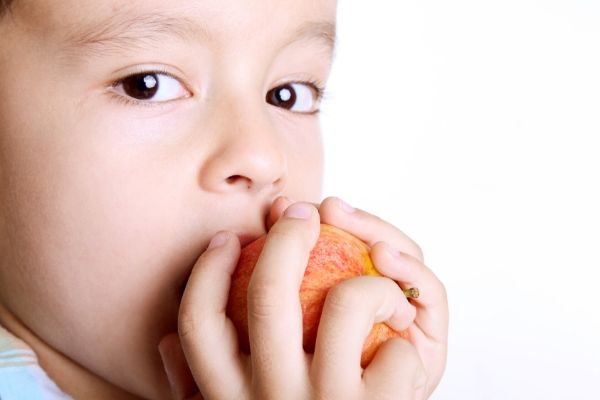
1. Follow the division of responsibility
The Division of Responsibility is a feeding method developed by Registered Dietitian Ellyn Satter. It provides a blueprint for feeding your child. Essentially, it allows parents to set boundaries during mealtimes by taking charge of when, where, and what food will be offered. The child has freedom to listen to their body’s hunger and fullness cues by deciding if and what they will eat. If you are stressed out trying to encourage your child to embrace the vegan diet, worried they are not getting enough nutrients, or feeling like mealtime has become a battleground, this is the place to begin.
2. Start with what they like
Write a list of all the vegan foods your child already enjoys. Many foods that kids typically like are vegan, such as fruits, vegetables, pasta, bread, peanut butter, and beans. Include dips they like, such as hummus, ketchup, or salad dressing. Serve these foods alongside newer foods. If you come to the table with only new foods and flavors, it can be intimidating for kids. Plan for each meal to include at least two things your child will be happy to eat (side dishes are fine).
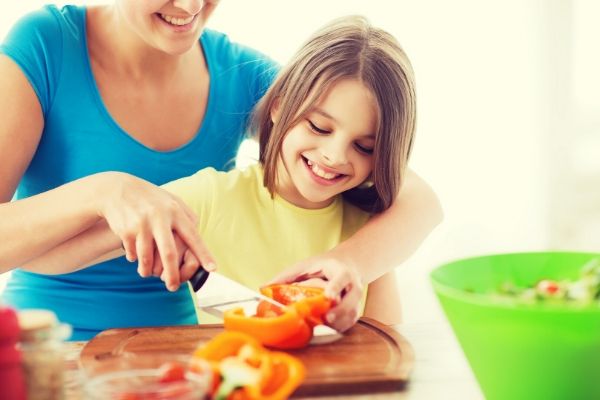
3. Include your child in the prep
Cooking together is a great way to increase children’s fruit and vegetable intake, expand their palates, and spend quality time together. Plus, kids are more willing to try a new food or dish if they have a hand in the preparation. Kids of all ages can help in the kitchen. Choose short tasks or simple recipes to start and tailor jobs to your child’s ability. Have your toddler or preschooler tear lettuce for salad, wash fruit and vegetables, or add spices to a recipe. Assign your child the official role of “taste tester” and ask them if the dish needs more spice, sauce, etc. Older kids can help peel, grate, and chop. Bring them with you to the grocery store or farmer’s market to hunt for ingredients. Involve your tween or teenager by encouraging them to pick a new vegan recipe, and then enjoy quality time while you cook together.
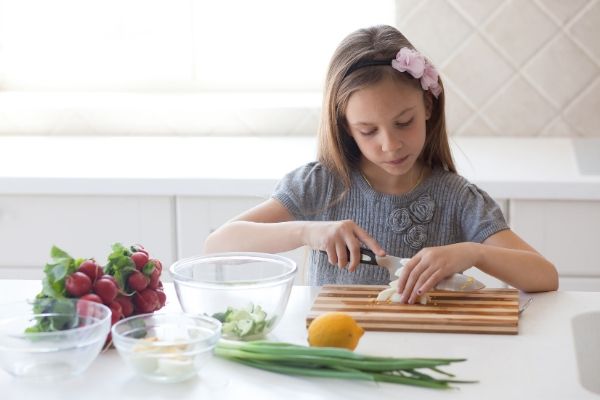
4. Have regular family meals
Eat together as much as possible. The more family meals, the better. Serve meals family style by placing the dish or individual dishes in the middle of the table and letting people help themselves. This way, your child will have control over what and how much goes on their plate. If they don’t take some of each food, that is okay. Be a role model. Enjoy your food and trust that over time they will begin to eat many of the same foods you do.

5. Focus on fruit and vegetables
Fruits and vegetables all have their own unique mixture of nutrients, so it’s important to serve different ones throughout the day. Cut them up ahead of time and have them ready to serve. Overall, children prefer the taste of fruits to vegetables. That’s okay! Fruits are typically sweet, juicy, and fun to eat. The good news is that both fruits and vegetables are packed full of vitamins, minerals, fiber, and healthy plant compounds like antioxidants and phytonutrients. If your child does not love the new vegetable options, or even if they do, offer them a colorful and diverse selection of fruits every day.
6. Hop on the bean bandwagon
Beans are a nutritional powerhouse. Like animal sources of protein, beans are packed with protein, iron, and zinc. And, unlike animal protein, beans are also high in fiber and full of phytochemicals. Beans also have calcium for bone health, potassium for blood pressure, and folate for cell health. Many toddlers love plain beans as finger food, without even seasoning! But if your child is not a fan of beans, don’t worry! There are many ways to turn your bean-hating-child into a bean-loving-one. Beans can be stuffed into burritos, turned into veggie burgers, mashed into quesadillas, blended into hummus and bean dips, and made into chickpea nuggets. Roasted chickpeas are a delicious, salty, and addictive snack. Lentils can be turned into spaghetti Bolognese. Stews, soups, and curries are delicious with beans. Don’t be afraid to experiment!
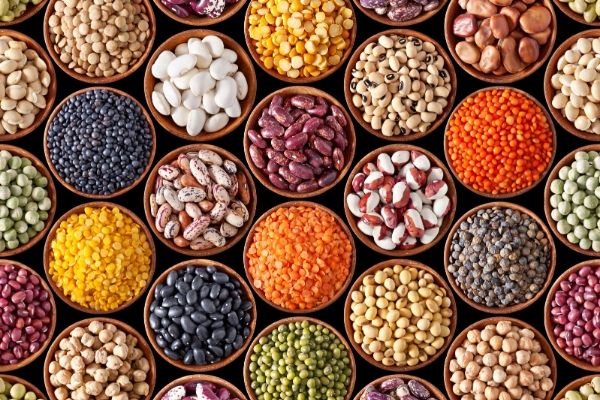
7. Make it fun
Cut food into shapes, make rainbow fruit skewers together, and invent silly names for the dishes you make together. Create a smoothie with your child and name it after them. In my house we eat “Princess Abigail’s Royal Toast” (wheat bread toasted with mashed avocado and beans) and drink “Green Monster Smoothies” (soy milk blended with spinach, peanut butter and banana). Cook vegan desserts together. Show them that vegan food can be fun, healthy, and delicious!
8. Don’t pressure your child to eat
Babies are born with the innate ability to regulate their food intake. They drink milk when they are hungry, and they stop when they are full. As they grow, it’s our job as parents to nurture this ability. By pressuring a child to eat a certain way, they may lose their natural ability to self regulate. Additionally, pressure tactics may backfire with children who become pickier, develop a dislike for the food they are pressured to eat, or simply become edgy at mealtimes. Instead of asking them to take one more bite or rewarding them with dessert if they eat their dinner, allow them to choose whether and how much to eat… from the selection of really good foods you offer.
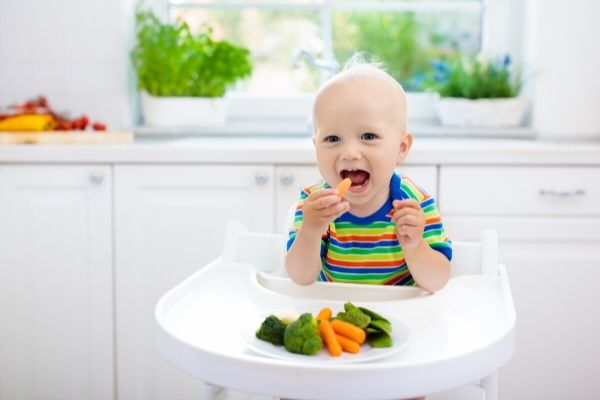
9. If at first you don’t succeed, try and try again
It’s easy to get frustrated when kids reject new dishes that you put time and effort into cooking. But remember that it’s normal for kids not to like the taste of new foods. Don’t give up! It can take kids 10-15 exposures to a new food before they decide if they like it. Some kids take even longer. Try preparing the new foods in a different way. Explore new recipes, substitute vegan foods for their old favorites, and stay the course.
10. Don’t give up
It’s normal and healthy for kids to test boundaries. They may revolt against your vegan food at first by refusing to eat, complaining, or pestering you for a different meal. These are all normal behaviors. Follow the Division of Responsibility and the tips above. Trust that, overtime, they will come around.
Given time, your dinner table can become an oasis of calm, where healthy eating and a new willingness to try and enjoy new foods becomes part of your family’s everyday routine. And remember that you are not alone. The whole plant-based community stands behind you! Bon appétit!
About Joanna Olson and Raised on Veggies
Joanna is a plant-based mama to her 3-year old and is passionate about helping families raise healthy eaters. She started the blog Raised on Veggies to inspire others to cook with their kids and bring the fun back into mealtime. She completed a Master’s degree in Nutritional Science with a focus in pediatric nutrition. Subscribe to her newsletter to receive simple, vegan recipes and cooking activities to do with your child.
More about feeding picky eaters with love
- Blog post: Meal planning around picky eaters in 7 loving steps
- Workshop: Feed picky eaters with love

